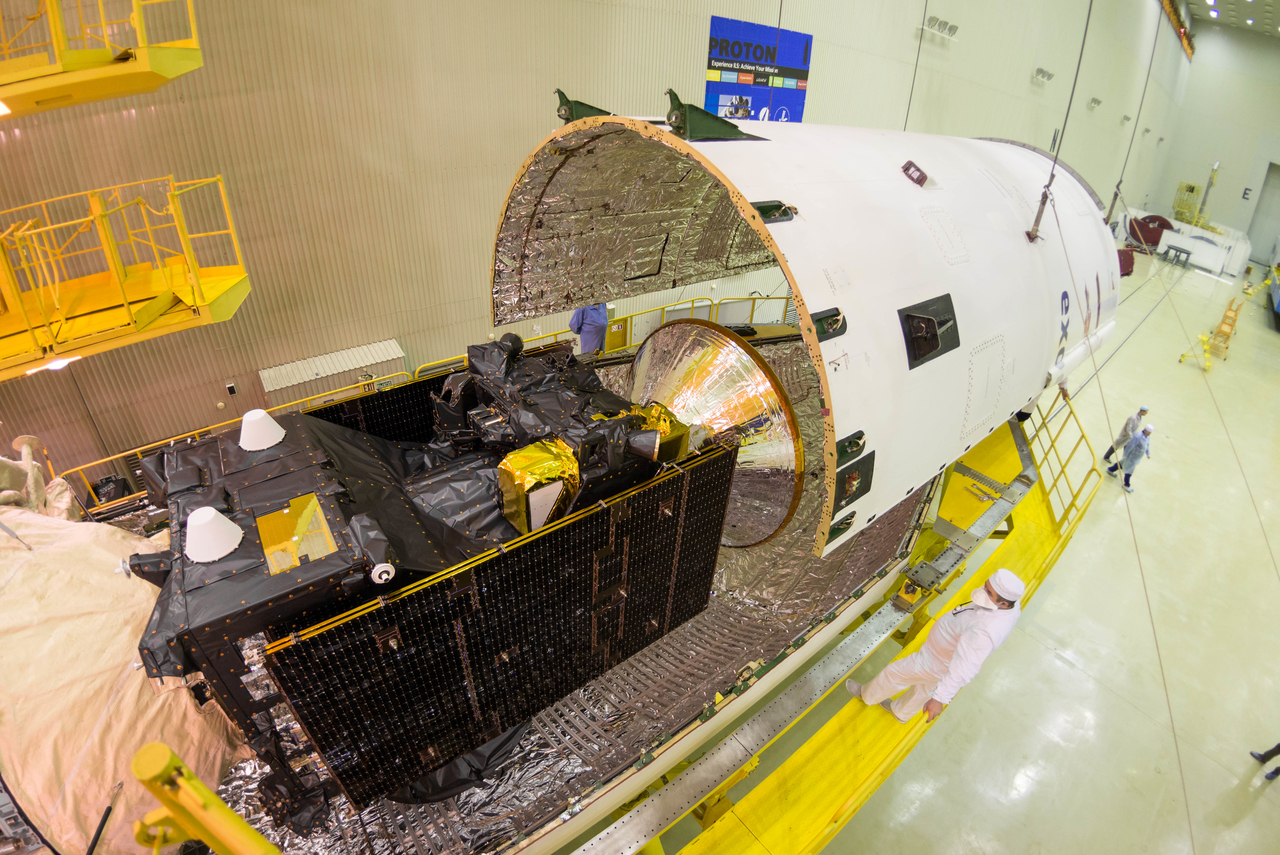Mission Overview
The 2016 mission is ESA-led and launched by Roskosmos. ESA will provide a Mars orbiter and an Entry, Descent and Landing (EDL) demonstrator. The ExoMars Trace Gas Orbiter (EMTGO) will accommodate scientific instruments to address three main objectives
• Detection of a broad suite of atmospheric trace gases
• Characterization of their spatial and temporal variation
• Localization of the sources of key trace gases
Additionally, the 2016 orbiter will provide surface telecommunications support for the 2018 mission and for other landed assets.
ESA will design, build and integrate a large spacecraft composite consisting of an ESA Orbiter (EMTGO) which will carry the scientific trace gas payload instrumentation and an ESA EDL demonstrator. The spacecraft composite will be launched in January 2016 by a Roskosmos provided launcher and will arrive at Mars in the last quarter of 2016. After Mars orbit insertion, the spacecraft will begin a series of manoeuvres to change the orbit inclination to 74 degrees and reduce the apoapsis, down to a 1 sol (1 Mars day) orbit. Further reductions of the apoapsis will be performed using aerobraking techniques over a period of about 6 to 9 months followed by a final circularization manoeuvre to arrive at the science and communications orbit with an altitude in the range of 350 km to 420 km.

The science operations phase is expected to begin at the earliest in May of 2017 (depending on the actual duration of the aerobraking phase) and last for a period of one Martian year. The science instruments on-board will determine the presence, quantity and potential sources and sinks of atmospheric methane, its precursor and product trace gases in the Martian atmosphere. Near the end of the science operations phase, the rover of the 2018 mission should arrive at Mars (January 2019) so that the emphasis on EMTGO operations may shift to provide a data relay function for the rovers, should other communications assets not be available in orbit around Mars. EMTGO will be designed for consumables that will allow further data relay support and science operations until the end of 2022.
Whilst the goals and objectives of EMTGO are rather straightforward, the spacecraft design proposed by ESA does present some difficulties for remote-sensing. The spacecraft is generally nadir-pointing but it rotates about the nadir-pointing axis in order to maintain the solar panels orthogonal to the Sun while keeping the Sun away from spectrometer radiators. This has no implications for point spectrometers (such as the microwave spectrometer in the strawman payload) but is a serious issue for line-scan imaging systems. This motion can be stopped for short durations to allow imaging but the orientation in which the lines of a line scanner are orthogonal to the direction of motion over the surface varies depending upon orbital position. In addition, the volume available for experiments is restricted by the design of the nadir-pointing platform which limits the overall size of an instrument.
Other experiments
EMTGO has three other main experiments onboard. They are
ACS (PI: O. Korablev)
NOMAD (PI: A.-C. Vandaele)
FREND (PI: I. Mitrofanov)
